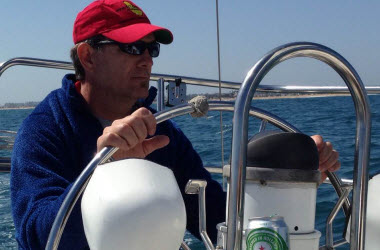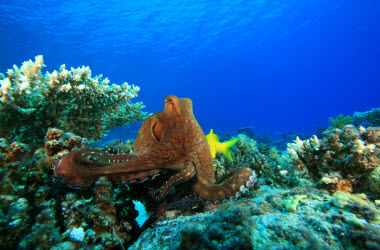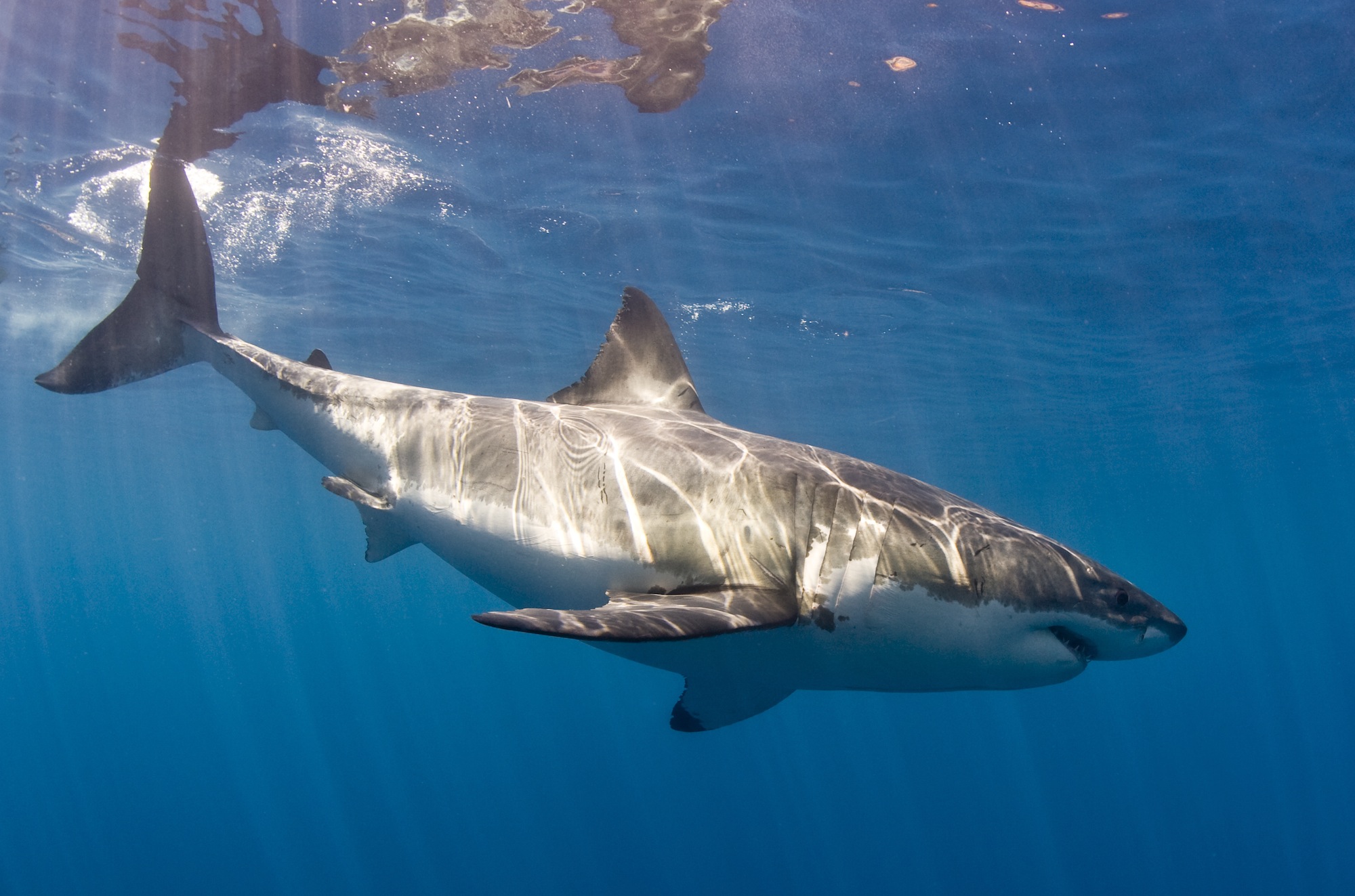December 20, 2016
You never forget your first. Your first kiss. The first time you rode a bicycle. Your first day of school. Your first dive. Your first encounter with one of your favorite marine creatures. While I have been a certified diver for more than 12 years, it wasn’t until recently that I had my first and most amazing encounter with a few cephalopod friends.
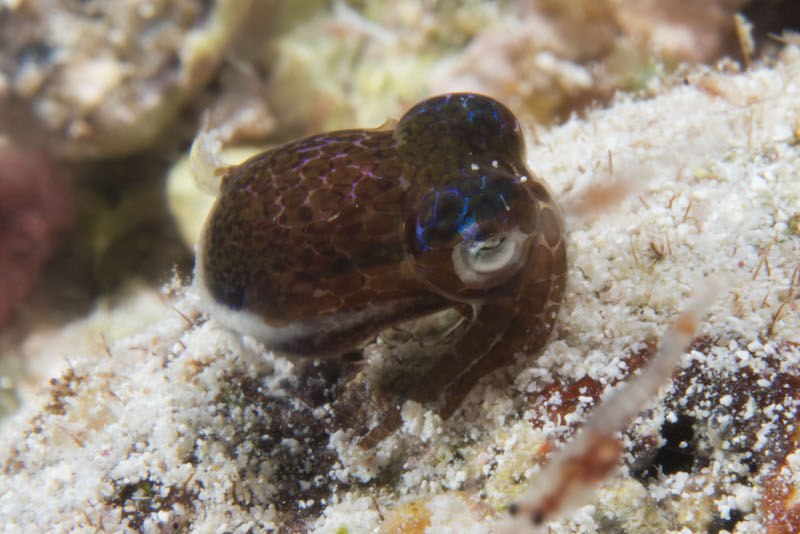
Anyone who knows me learns fairly quickly that I am a big U2 fan, and I think invertebrates are the most fascinating and most amazing of all living things. More so, I love the cephalopods. I find octopus, squid, and cuttlefish to be truly remarkable creatures. They have the ability to change color, blending in seamlessly with their environment. Octopus and cuttlefish can even change the texture of their skin! And we think goosebumps are radical feats!?! Cephalopods are thinkers. They are also quite crafty, able to solve complex problems, even in laboratory settings. They are highly intelligent and appear very curious, peering back at us with those wonky eyes as if trying to figure out as much about us as we try to figure out about them.
In fact, recent studies have identified that the genes of octopuses are completely unique when compared to other members of the same phylum. And what’s more interesting, their genome, in certain respects, resembles that of vertebrates, although it is suspected that this is due to convergent evolution rather than a shared ancestor. (But wouldn’t it be awesome to be able to change color with a mere thought!) Cephalopods are unlike most marine invertebrates, perhaps that’s why I find them so interesting.
While I have come across Caribbean octopus on many night dives, they have never really hung around. It wasn’t until a recent trip to Raja Ampat that I had one of my most exciting and more memorable experiences with a couple of different cephalopods.

My first was with a day octopus, probably Octopus cyanea, but I can’t be sure. As I was moving along with the current, a little movement on the reef caught my eye, an octopus inching its way over the coral. It wasn’t in any sort of a hurry. When it noticed me observing it, it paused and seemed to assess me for danger. It must have realized I wasn’t a threat - I couldn’t even take a picture! - because it continued meandering slowly across the coral, pulling itself along with the tip of each arm. After a few yards, it found what it was looking for, a comfy hole in the reef.
Slowly, and I swear, while keeping an eye on me, it brought one arm at a time into the hole until finally it appeared like a dull red, partly deflated balloon resting on the reef. It sat there, sort of a dusky maroon colored blob looking at me with it’s hockey puck eye. Having made up its mind, it changed color, going from dull red to a mottled white and grey to match the reef, and I mean to the letter. Had I not noticed it moving along the reef, there is no way I would have recognized the blob on the reef as an octopus. Not only was it the exact same color, but it had a few bumps and ridges on it to simulate the terrain around it. I was highly impressed, but by this time pretty far from my dive buddy so I needed to move along.
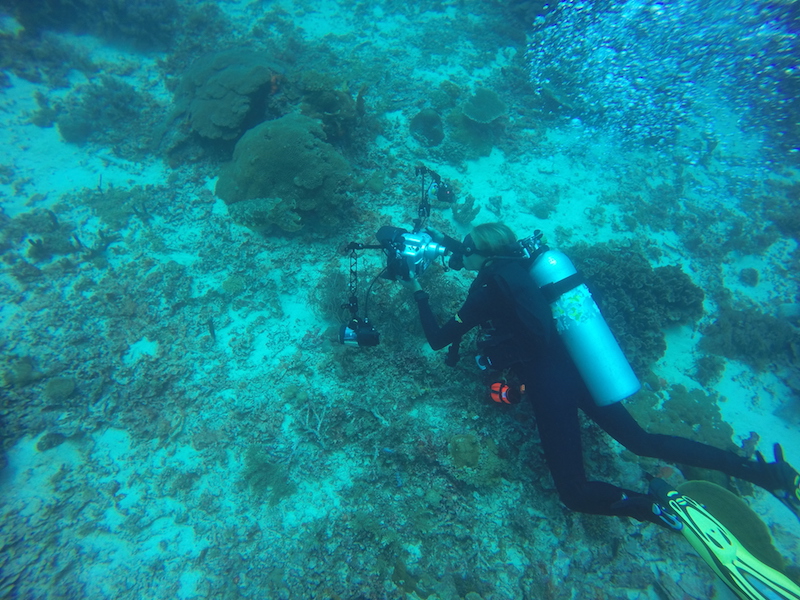
After kicking myself for not bringing a camera along on earlier dives I was prepared for my first ever cuttlefish encounter. And what a doozie it was! This football sized creature hung out with us, displaying its awesome color-changing ability and texture changing talents all while studying the group of us with its complex eyes.
I watched from above as a fellow diver took photos with a couple of strobe flashes and only the half of the animal presented to the camera changed color in response to the light. There was a perfect line down the middle of this cuttlefish in recognition of the flash. 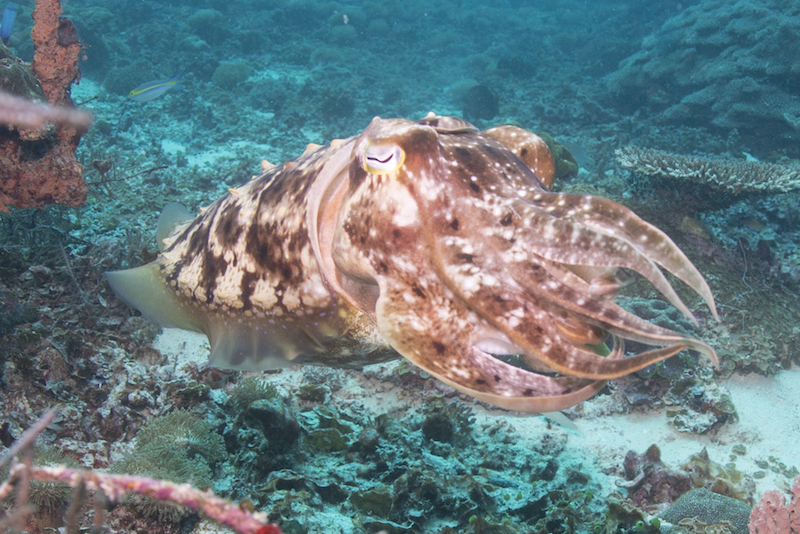 I was in awe!! Imagine being able to change the color of your skin to match your favorite sweater, then trying something else “on” with just a thought. Stunning. Did you know that cuttlefish are technically color-blind? They don’t have the ability to see color like we do, yet they are masters of camouflage.
I was in awe!! Imagine being able to change the color of your skin to match your favorite sweater, then trying something else “on” with just a thought. Stunning. Did you know that cuttlefish are technically color-blind? They don’t have the ability to see color like we do, yet they are masters of camouflage.
Not only was this cuttlefish in full impress-the-humans mode, but it permitted us to get fairly close. If you’ve ever taken a close-up photo with a GoPro, you know just how close you have to get. This cuttlefish was patiently permitting each of us get our photos taken. It was as if it was posing for the best shots possible. It was remarkable and an experience I won’t soon forget.
So the next time you’re diving, enjoy the fish, but be sure to take a second look and see what’s moving around on the reef, you never know what you might find!

